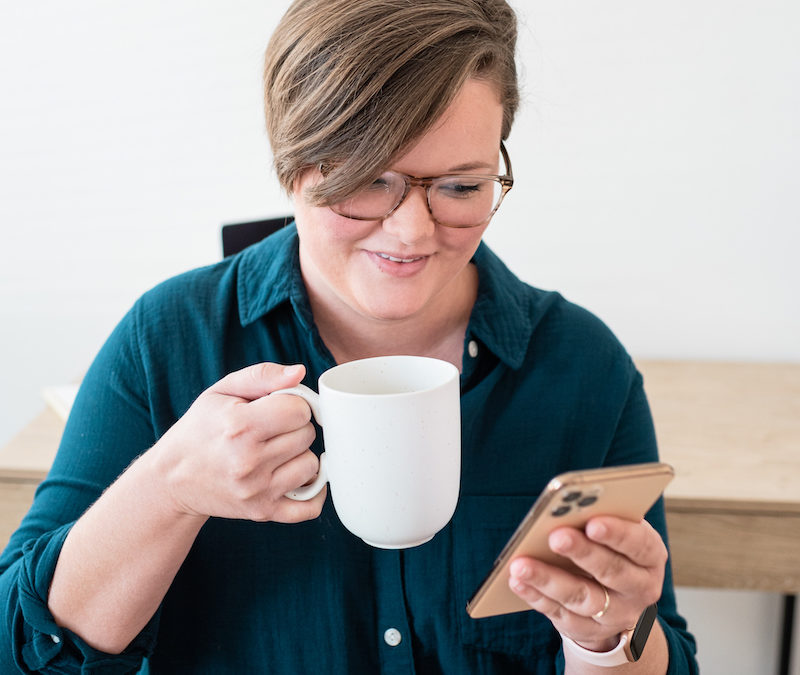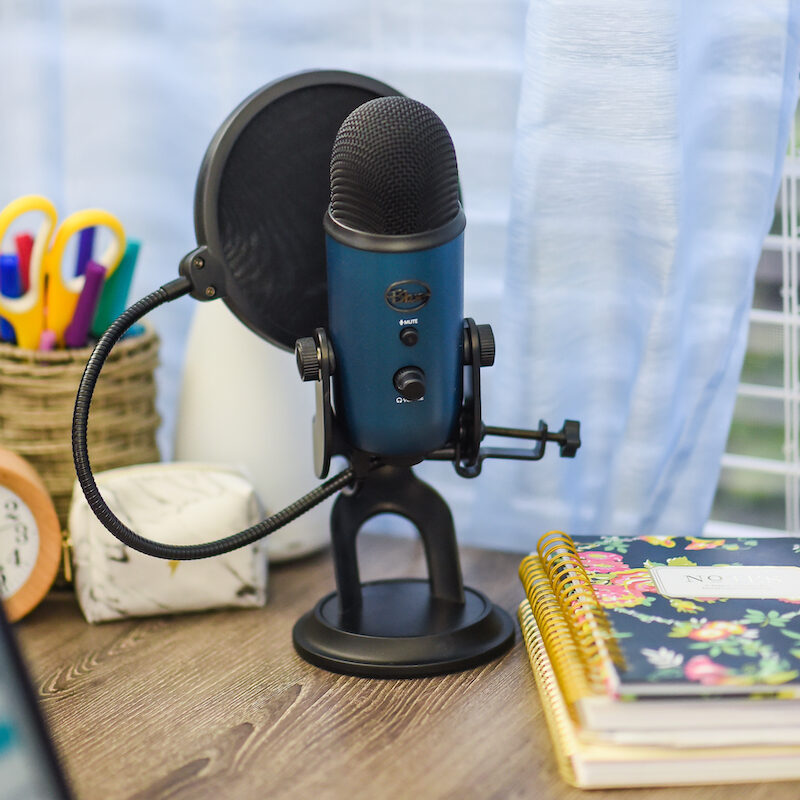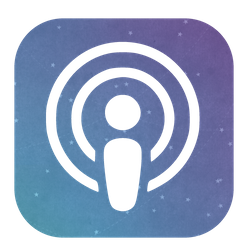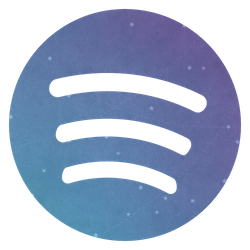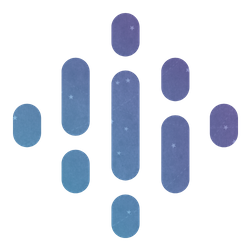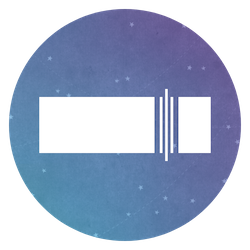episode 07
Web Designers DON’T Need an Email List
A website project is a 1:1 experience. Therefore, the booking process requires more than simply sending out a mass email prompting your subscribers to click “buy now” and add a premium website to their cart. In other words, the one-to-many email marketing advice we get from generic online business gurus isn’t useful for web designers who are offering 1:1 services.
Today Sam & Karyn discuss the reasons why web designers don’t need an email list to book clients, and dig deep into more useful actions to take instead.
Episode 07: Web Designers DON'T Need an Email List
Show Notes:
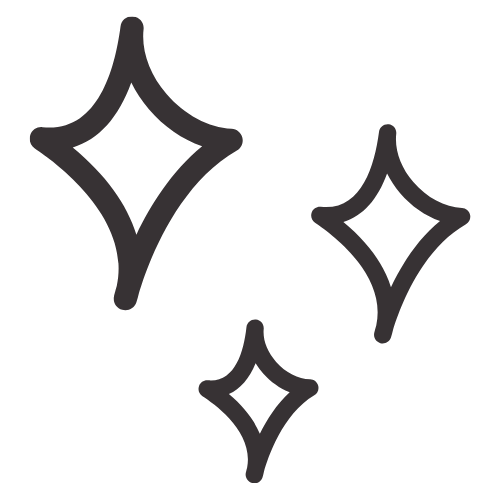
The difference between an email list and a contact list and the different types of businesses that may benefit from each

The lengthy process behind email marketing and how it is actually taking away from your opportunity to book clients

Showing up in a personalized, one-to-one way with unique messages instead of mass email blasts

Nurturing your contact list directly and what to say to them when you reach out
Episode Transcript:
Karyn Paige, Sam Munoz
Karyn Paige 00:00
What we’re told in the realm of email marketing is that it starts with a freebie, it goes to a connection to an email service provider. And then when somebody signs up for your freebie, you nurture them with a series of emails so that they can get to know you and like you and trust you through, you know, the course of days or weeks. And then in order to keep them interested in you and stay top of mind with you, you have to continuously regularly send them emails, usually once a week, just reminding them, Hey, I do this thing, hey, you know, this is what I offer. Maybe you get advice that you need to start creating content, like blog posts, or videos or a podcast or like something like that. So you have a reason to send them emails, right. And that process, that ecosystem of email marketing alone is such a time distraction, where in that process, have you gotten a client?
Sam Munoz 01:01
Welcome to making website magic where we empower women to step boldly into their web design, businesses follow their intuition and claim the success they’re worthy of. I’m Sam Munoz.
Karyn Paige 01:11
And I’m Karyn page, where the tech wizards behind Sam Munoz consulting on the making website Magic School of Business, where two women here to talk about what it actually takes to run a web design business that’s aligned with your vision.
Sam Munoz 01:24
Spoiler alert, it probably isn’t what you think it is ready to hear about everything from refining your business vision, networking with intention and creating a magical client experience. Let’s do it. Hey, Karyn. Hey, Sam. I like how we always say hello, after we’ve already been talking on zoom for a little bit. I find that amazing. So I think it really breaks this whole fourth wall of the podcast. So hello, Karyn.
Karyn Paige 01:56
Yeah, yeah, let’s let’s let people behind the curtain. Okay. Yeah. Welcome to this episode seven. We’re gonna talk about something kind of provocative today.
Sam Munoz 02:08
Controversy. Web designers don’t need an email list. Period. hard stop. It is a sentence.
Karyn Paige 02:14
Yeah. It’s a declarative statement.
Sam Munoz 02:16
Yes, we are declaring it. We are releasing you and I hope by the end of this podcast, do you feel free? That’s like the biggest takeaway from this, I want you to feel free from the chains of the email list. So let’s get all the way into this episode. We have no time to spare we have so much to talk about so much depth to go into. And let’s start with a little storytime. Does that work for you? I love a story. Let’s go. Me too. Okay. So I wanted to kind of give a little behind the scenes of SMC just because I think that context is really helpful. When I first started SMC I decided which if you guys don’t know this, I don’t know if I’ve ever said this on the podcast. SMC is seminaries consulting, just it’s shortened. We did not have an email list for a long time, right. So I use, I used to use dubsado for email management. And what I mean by that is like content management, or contact management, excuse me. So that’s basically sending invoices, sending contracts, creating proposals, keeping contact emails in one defined location. But I did not have like an email list, you know, some lists that I was sending emails actively to, until we introduced our website templates, that’s when we brought in the whole email list thing. And that was really for the purpose of I know that type of product is a one to many product, and it made sense to have an email list at that point. But now, as many businesses do, there’s ebbs and flows and refining that happens, we’ve decided to phase back out the email list and really just send her around this idea of a contact list, which we’re going to get into in this episode in terms of like, what is that? And how does that differ from an email list, but I just wanted to say that the email list has not been required to book one on one clients at all. In fact, I would argue, I’m trying to think back to the email list, if I have ever booked a one on one client from our email list, and I really do not think that is the case. It has always come from direct one on one communications, which I find fascinating.
Karyn Paige 04:23
Yeah, so the whole idea of like, a shooing an email list, and just doing away with it or not even getting one started is really, really going against the grain. Like it really is. Like that is not what we’re told, is how you market your business online in the 21st century,
Sam Munoz 04:42
right. We’re all told that we need to be creating an email list, we need to have a freebie we need to have opt ins that people put their email address into. And then we need to be sending them information every week or so to warm them up and eventually funnel them into this other thing. And you know, have these lead pages and landing pages and there’s like so much collateral that is involved in an email list. And this idea of like, actually, what if we just like took that all away? What if we scrapped the idea of creating this one too many email list where I’m this one person writing an email to, you know, 500 people, and instead just focused on what we call a contact list. So why don’t we start by defining the difference between the two. And then we can get into, you know, what happens when you don’t focus on an email list and why a contact list works better? Okay. So
Karyn Paige 05:34
when you think of a contact list, what’s the first thing that comes to mind, right, it’s probably the people that are in your phone that you reach out to, you know, send them text messages, phone calls, it’s probably your address book, in your email, like your Gmail account, right? Like people that email very often. So at the heart of it, a contact list is really just a group of email addresses where you would actually like send a one to one message,
Sam Munoz 06:04
right, and the people that might be on that would be something like past clients, people you’ve had discovery calls with, you could like save their email address in your Gmail or, you know, if it’s connected and integrated to your other, you know, contact software, it all just funnels into one place anyway, people that you’ve maybe had in your network, so collaborators, your biz besties people, you’ve had coffee chats with people that you’ve met at networking events, they’ve given you their business card, and now you have their email address, which is an invitation, right? That’s contact me when to contact the words right in there. Basically, like Karyn said, anyone you could send a direct email to, and it wouldn’t be weird. Now I want to like, actually, now talking about this, I feel like I want to say this one caveat. Nothing that we’re talking about today is related to cold pitching people. It’s not about finding people’s email addresses on the internet and sending them emails and adding them to your contact list. Please do not do that. Well, we are talking about is people you have an established relationship with and you happen to have their email address where you can continue to dive deeper into that conversation and dive deeper into that personal relationship.
Karyn Paige 07:11
Yeah, absolutely like to piggyback on that, it’s like people that you’ve already made a connection with. And that’s why you have their email address, right? Very important.
Sam Munoz 07:24
And then we can contact contrast that with an email list and the way that everybody is talking about creating this email list. And it is really just a place to blast emails to a large group of people. This is really, in my opinion, in Karyn’s opinion, best for course creators, content creators, one to many business models, where you need to talk to a lot of people at once, and you’re creating funnels and experiences where people are going through things in my head that just, it’s just crazy.
Karyn Paige 07:52
Yeah. I mean, to me, when I think of email lists, honestly, it’s when somebody is selling a product to the masses. That’s why you have an email list. Because think about when you like, not in the like online business space or whatever, right, but like, maybe the online shopping space, if you purchase something from an online store, they will add you to their email list, because then they want to keep sending you coupons, and they keep wanting to letting you know when there’s a sale. And when there’s a new product in their store. They that’s how they’re marketing to you, right to get you back in to buy more stuff from them. So it’s email lists are really, really great. If you are like e commerce or again, like you said, if you have a course where a course is a product, digital product, right? Yeah. And it’s usually like a low cost product. So what’s required to get somebody to who’s on your email list to maybe buy that thing? Does it involve a lot of expressing a value, or it’s something that can be just expressed through? Hey, here’s an email where I let you know that this is the thing you can buy from me, here’s a link to buy it right now. When and we never interact, like really unpacking that. What happens when you’re using an email list and what it’s for? And what it does? If you think about that in no way did I say services? In no way? Did I say buy a website from me right now by clicking this link? In no way did I say this website that I offer this service that I provide costs four to five figures, click this link and buy it now. Because that’s not how that works. Right? Add it to your cart. Yeah, you can add you can add it like a web design experience that’s custom or even templatized you can add that to your cart and then be done with it. So when you start thinking about like, why an email list exists, how it can serve your business, against your business model being a one to one service based business, there’s a disconnect
Sam Munoz 09:55
when you put it like that like so black and white. It also becomes super clear. And if you even Take it to, let’s say realistic things like in real life IRL, as we say, yeah, think about like buying a home, you’re not like on an email list for this home. And it’s like click to buy now. And you know, there’s like a, there’s a court ship that happens between you and the realtor and the other people involved. And there’s like a whole experience that happens, right? And you can compare and contrast that to say Old Navy, I’m on their email list because I want coupons, and they send me email blasts, I know that no one at Old Navy is writing directly to Sam Munoz. You know, they’re sending out a thing, and I’m adding things to my cart, and I’m purchasing. So if you think about it like that, you can really easily very decisively say that an email is doesn’t even really make sense. But that’s what we’re told all the time. And that’s, you know, if you’re in, if you’re on Instagram, and you’re scrolling around, and people are saying, This is what it takes to be successful. No wonder everybody’s out here trying to create an email list and a freebie like no wonder that is what we are influenced by. But that doesn’t mean that it’s the right choice for our business model.
Karyn Paige 11:02
Yeah. And I mean, he’s the word that I that came to mind for me with the word was influenced like, we’re not influencers, we’re web designers. You know what I mean? Also, there was something that you said about the Oh, you wouldn’t buy a home from an email list? No, because there’s back and forth, there’s revisions, there’s things that come up where we need to have a conversation, we need to talk about that. He can’t do that by sending somebody an email that says click this and add it to the cart. Right. So buying a house is also a one to one experience.
Sam Munoz 11:34
Yeah, you know, what’s interesting, too, is I’ve seen where people have had, like I’ve seen on websites where you can purchase web design work with like a click now by now thing, not a great idea, because you don’t get the chance to vet that that client? I mean, do you really want someone, any person on the internet just like coming to your website and being able to like click and buy now and like pay two grand, even if they pay you the money for it? Like do you really want to be working on that project. And so all of this is really circling around this idea of like you being in the business of web design and development and offering that as a service. And you being a service provider, you are not a product, your work is a service. And so having a contact list where you can reach out to people directly, or you can you know, send a bunch of emails to people in that one to one way is going to be way more worthwhile for your type of business model.
Karyn Paige 12:26
I want to point out something to about not necessarily centering us in where we don’t need an email list, but also centering the people who sign up for an email list and why and what they expect to get out of that. So true Karyn, the people who usually sign up for an email list, they want a quick win, for example, they want 15% off what they’re going to purchase from their Etsy shop. So they’ll sign up for that list, get the coupon, buy their thing, and then unsubscribe, right, or they are usually looking for some sort of like DIY free information type of result for whatever their problem is, right. But as somebody who’s looking for a DIY solution to their problem, is not going to pay for a df, why done for you done with you collaborative web design experience, right, it’s also important to think about the people that are attracted to signing up for an email list. And why they would do that what they get out of that. And it’s usually not a one to one web design experience.
Sam Munoz 13:38
That’s right, that’s such a good point to mention, too, is the person that is being attracted to an email list in the first place. So hopefully, that kind of explains the difference and frames the conversation so that we can go deeper into what happens when you don’t focus on an email list. And why you want a contact list and what the heck to say to these people. So hopefully, you guys have a good understanding of contact list versus email list and what we mean when we’re talking about that. So I would like to go deeper into what happens when you don’t focus anymore on an email list when you kind of cut that out of the conversation and your day to day.
Karyn Paige 14:17
I’m smiling so hard right now, because there is so much that gets freed up when you are not focusing on an email list. I’m talking about time I’m talking about anxiety, talking about opportunities to use your time in other ways money mentally Hey, about that. So okay, when you don’t focus on an email list right out of the gate, it frees up your time to like make more one on one connections. But why why Okay, here’s why. One, honey, if you’re listening to this, and you’ve created a freebie and an email list and email marketing sequences, you know, you already know where I’m going with this one, okay. Okay, so Here’s what happens. What we’re told in the realm of email marketing is that it starts with a freebie, it goes to a connection to an email service provider. And then once somebody signs up for your freebie, you nurture them with a series of emails so that they can get to know you and like you and trust you through, you know, the course of days or weeks. And then in order to keep them interested in you and stay top of mind with you, you have to continuously regularly send them emails, usually once a week, just reminding them, Hey, I do this thing, hey, you know, this is what I offer. Maybe you get advice that you need to start creating content, like blog posts, or videos, or a podcast or like something like that. So you have a reason to send them emails, right. And that process, that ecosystem of email marketing alone is such a time distraction, because, one, you need to figure out what your freebie is. So then you go down the rabbit hole of like, doing a lot of like passive lurkey, market research to figure out what somebody might be looking for, and what would be a desirable opt in, then you have to create it. So you have, and there’s a whole like, blockage in there about, you know, creating the perfect freebie graphic, are you going to do it in Canva? Are you going to go to creative market? Are you going to pay somebody to do it like what’s the system, the delivery system and the design behind it, then you also have to create the nurture sequence. So you have to figure out what to say. So you’re spending time writing all of these emails, then you have to connect it, and you have to automate it. And then once that’s all done, you have to go out and market it. So you have to create all of this, like social media content to get your eye people’s eyes on it. Right? So then you feel like you’re forced to be posting every day in social media and coming up with all these Look at me, look at me, look at me, type of pieces of content that then you’re repurposing and putting in your emails. And maybe you’re spending time writing blogs and trying to like position yourself as the person who answers everybody’s questions. And that’s why you’re the expert content creator. And you have to do that every week. Because if you don’t do it every week, you’re going to get lost, people are gonna forget about you, and Heaven forbid that you become irrelevant, because you’re not staying top of mind. Where in that process, have you gotten a client?
Sam Munoz 17:27
Oh, my gosh, when you say it like that, right? Like when you spell it out, when you spell it out like that, like why it takes so much time to have an email list, like hello. And I didn’t even mention how you have to then create like pins from Pinterest, and then like schedule your stuff on Pinterest, and how you have to the sending of the emails every week, like Okay, so that’s all the time thing, right? Like that is a huge time suck what you just described, like, Where was the money coming in. And also, if you knew that, like you’re selling a product, or like you were creating something where an email list makes sense, then that time investment is worth it. But that’s not what we’re doing here. We’re not trying to attract attract people that want DIY support. We’re not trying to attract people that want our freebies, we are trying to attract people that want to pay us like four grand for a website. And so that time investment does not align with the ROI. So that’s it from a time perspective. And then also thinking about it from an energetic perspective, like having an email list can be a burden, if it is not producing results, because you feel compelled and required to show up on the email list and send an email every week, and you’re having like three people open it or you have like an email list of 20 people, which there’s nothing wrong with that if those are contacts, like 20 people as contacts is amazing. 20 people on an email list where it’s like not a personalized experience. I mean, I’m putting my hands up because like, I mean, I don’t know it’s an it’s a numbers game. When it comes to an email list. When it comes to a contact list. It’s a depth and quality game.
Karyn Paige 19:05
Yes. And we’ve talked about this time and time again, right. Like, if you only needed to work with 10 clients a year to reach the financial goals that you are interested in. You don’t need an email list of hundreds of people or 1000s of people in order to make that happen. Especially like in previous episodes when we talked about discovery calls, you know, like when you really start to make those one on one connections, do discovery calls and you realize that maybe out of every two people you talk to one person is going to convert to a client and you need 10 clients a year. That really means you need to talk to 20 people in a year to m times it can take you a year to get 20 people to sign up for your freebie.
Sam Munoz 19:49
That’s right and you haven’t even converted them into anything other than an email
Karyn Paige 19:53
right? So just thinking about like literally like what what do you need in your business to reach The goals and the the revenue goals that you have? And is that going to come from your email list because let’s talk about how long you’ve been working on your email list. And how many people on that list have actually hired you to build that four figure website. And it’s, there’s probably zero, right. So that’s why we’re talking about like, release yourself, like relieve yourself of the pressure to use this type of marketing. Because it’s not a good use of your time, it’s going to then energetically really frustrate you and give you anxiety and make you feel like what’s not working, what’s wrong with me, all of these things in so you keep trying to put more energy into it to make it work, which is pulling your focus away from just making one on one connections and maybe reaching out to those people who are your contacts, who are really going to help you get those clients, your contacts, the people, you know, the people who care about you, the people who’ve made one on one, you made one on one connections with, like we mentioned earlier, like collaborators biz besties people you’ve gotten on Discovery calls with but maybe it wasn’t the right time for them then that if you keep reaching out to them and nurturing them, maybe it will be their direct way. Yeah, nurturing them directly.
21:20
Right.
Sam Munoz 21:21
I think the other thing too, is that like, I hope that if you’re listening to this, and you have an email list, I actually hope that you walk away like, Oh, my gosh, I was just gifted some time, right? Like if you have been working on your email list, and you’ve been spending two to five hours a week doing things like marketing, the freebie writing emails, creating new opt ins, things like that, like I hope you feel like oh my gosh, I have all this time now that I can dedicate and what if you just decided, if you’re like I don’t, I still don’t know, like, this is a new idea to me to not have an email list. So like, I don’t want to jump away from it like with both feet too fast. What if for the next like 30 days, you did not do anything related to your email list. And any time that you were spending on that email list, you just put it into reaching out to people directly reaching out to your contacts, getting on Discovery calls, booking coffee chats, like networking with people directly, I would challenge you to try that and just see what the results are. If you’re not 100% like this is a great idea. I mean, you’ll see it, you’ll see the results. And you’ll be like okay, well what was that email list for?
Karyn Paige 22:25
Okay, so one other thing that it makes me think about it was like when you’re you’re spending so much time on your email list, the other things that you could be spending them on, in addition to making one on one connections, like reaching out to people or having coffee chats, like getting more discovery calls, it also frees up your time to do those things that you don’t feel like you can do. Like in Episode Three, we talk about dreaming, right? Like, if you don’t feel like you have any time to dream, maybe we just gave you five hours a week, back to you like, you could take 20%, you could take 5% of that time. And sit down, Dream free from distraction and figure out what you really want in your business. Right, you could take that time and start building relevant like portfolio examples for the people that you really want to work with. So that way, when you get on a call with them, or you send them a proposal, you have an example of of work that you’ve done, that speaks to them directly, right, like, again, thinking about, like where you’re spending your time, there’s so many other things that you can do to move your web design business forward that have absolutely nothing to do with your email list.
Sam Munoz 23:35
Oh, those are such great tips and ideas, Karyn. So thank you for sharing that with everyone. And again, I hope that after listening to that, you feel free from this idea of an email list. And if you don’t have one, you feel 0% pressure to start creating one and instead focusing on the contact list. And I’d like to go deeper into why a contact list. So again, just as a reminder, and a recap, a contact list is a group of people that you can send a direct message to because you have a one on one established relationship with them. So why is this so important? And I think the top most summary of why a contact list is so meaningful is because our business and we’ve talked about this in past episodes. Our business as a web designer and developer is one to one. During the entire process of like booking the project doing the project off boarding the project, it is a one to one experience, we are giving someone a direct service. It’s not a product, it’s not a digital thing where they like go off and do something on their own. We’re working with them directly. So having an establishing that relationship and continuing to nurture it directly is going to be so impactful for your business. And I want to share a little bit later about how I still do this today. Today, almost four years later. The other thing too that I find very interesting is this idea of especially if we compare a contact list to an email list is this idea of like open rates. You know how you can see that on your Active Campaign or ConvertKit. You can see how many people opened your email You can see how many people unsubscribe from it, etc. Think back all of us could think let’s just take a pause for a minute, how many email lists? Are you a part of that you just like, see the email, and maybe you open it to make it unreadable, you know, to make it red. And then you just like, push it to the side, I do that all the time. I’m like, I don’t necessarily want to leave yet. But like, I’m not interested at all in what they’re talking about, and probably never gonna buy from them. But like, I’m just too lazy to unsubscribe.
25:22
Yeah, like a lot of us do.
Sam Munoz 25:24
So when you compare that to a contact list, where you’re like sending emails to people directly, it’s harder to ignore that direct email. And also, why would they like why should they you’re a connection of theirs. And so you’re reaching out and genuinely asking, Hey, how is everything going with your website? How has business been going? Hey, do you want to catch up on a coffee chat? Like why would someone ignore that email, but if you send it to 500 people, and there’s, you know, you use the Hey, first name, pound sign, pound sign, first name, I mean, we all know, nobody’s in there writing your name. It’s a mass email and your content can be personalized, it can be customized and specific to the people on your contact list, when you send them a direct email, because it is a direct email, you can’t do that with an email list, you
Karyn Paige 26:07
do that with an email list. And again, like even thinking about going back to the time you spend, if you sent an email to like one person reaching out to them, asking them how they’re doing, we’d be more likely to get a response, right. And you know, what, it’s like how much time it takes you to write an email to your list, and then you know, nobody’s gonna read it, or like, 5%, open rate or whatever, like, that’s not a good use of your time,
Sam Munoz 26:30
you know, right, 100%. And so like, That’s why a contact list is so important. It really comes down to the one on one nature of the business and pulling that thread through the entire part of your business and remembering that, like, you run a very particular type of business model and leaning into that, so important, but what do we do with the contact list? Right? Like, we’re over here telling you that it’s so important, but like, what do you do with it? And how can you make the most of that time, so that today, you can go out and send some of these emails, because you guys like, still do it to this day? And they work?
Karyn Paige 27:04
Okay, yeah. So you might be thinking, well, like, I have a habit now of using my email list. And I know what to send out from there. Because there’s like 50, you know, generic online business coaches who are giving me ideas for, you know, 30 days of content added all those things. So you’re like, well know what to do with this contact list. This is brand new information. And there’s so much you can do with it. So like, right out of the gate, like, one thing that you could do is email people on your contact list. Maybe past clients, people have done discovery calls with you, but didn’t book and let them know that you’re now booking projects for such and such date and time, like, you know what I mean, like you, Hey, now booking projects for July 2021, like, and then proceed from there. So that’s one thing you could do with your contact list.
Sam Munoz 27:52
The best part I think about that is that if you’re reaching out to past clients, that you’ve had a relationship with, you know, what, their businesses, right, you know, what they need. And so you can really, it’s like a curated experience, right? It’s like when you go to a fancy restaurant, and they like, give, you know, I don’t, that’s not an example I can even relate to or even explain. So I’m just gonna not go with that you can leave that in the editing team leave that. And because it’s just I’m not fancy enough to even know. But what I’m saying is you can create a customized experience for someone where you’re saying, This is what I know you need in your website, and for your business moving forward. I’m now offering this I’ve got spots available. Let’s talk I think I might have mentioned that. I think maybe I mentioned that on the podcast already that like I did that with an old like an offer that I had created before we like made an enhancement. And then we reached back out to those people and said, Hey, I know you loved this feature that we created. Now we have this new enhancement. If this is something that you’re interested in, which I think you are, go ahead and like, let me know. And I’ll send you the invoice and we’ll get it all set up for you. And every single person said yes, because I emailed them directly. And I knew what their business was. And we already had an established relationship. So that’s why this whole all of this contactless stuff really comes down to the networking, right? It comes down to like creating that like web of referrals and network within your business that you can access at any time.
Karyn Paige 29:07
Yeah, absolutely. And so in addition to that, you know, like reaching out to past clients and saying, you know, checking in with them and saying, hey, how is your business doing? It’s been a year or so since we’ve worked together, or however long? Are you offering Anything new? Is there anything that’s updated in your business that now needs to be reflected in your website that we didn’t do when we worked together previously. So it’s kind of like that combination. You can use your contact list, to reach out to past clients when you have a new offering. And you can reach out to past clients to check in with them and ask them if they have a new offering that now needs to be represented on their website,
Sam Munoz 29:45
which I think is so cool, because if we’re talking about like, personally connecting with people and making those touch points, one on one, like what better way than to jump into their email and say, Hey, I noticed that you’re like doing some really badass things in your business. Is there anywhere in your business that you need support? Do you have a website person you’re working with? Do you need a landing page for you know, it can be very like, I’m checking in with you. And I need. I’m curious what you’re doing in your business. And you can also come to that email from a very expert level place where you’re like, I know what is required to do X, Y, and Z that you’re trying to do next in your business. Let’s talk about if we can work together again, to get you there. Something that I’ve talked about a bunch on this, I used to do this, like, what was it called morning tech with Sam, I was watching back through some of those old videos, mostly because I think it’s so cool to have had it documented, like at the time, and I had this video about the power of the follow up email. And the number of times someone you know, will say no, because the timing is not right, or because they didn’t have it in their budget to pay for your services. But reaching back out to them and saying, Hey, remember, like six months ago, we talked about doing a web design refresh? Did you end up finding someone else to work with? Is this something you’re still interested in? And you might not always get a yes, right? That’s fine. If you don’t get a yes, but you made the Ask and you might get a yes. And I just think that like the follow up process of like, coming back to people who said yes to getting on a call with you, or like discussing things with you or inquiring with you is so powerful. And that’s another really effective use of your time. Like, I continuously do this in business like I will have in our sauna board to like reach back out to past clients, I’ll have, you know, send an email to so and so about continued support, send an email checking in on their past launch, or send an email about our new offerings, or that we’re now booking for this time. This is something that is actively done in our business to this day, and our business has continued to grow from when we started to do it in the beginning. And never once Am I thinking Oh, I should send an email out to like the email list about this, it’s really not a good use of time.
Karyn Paige 31:58
One other thing that that you can use your contact list for is making announcements for when you launched a new website for a client, right. So again, like to your point about like supporting your clients, it’s a great way to get more eyes on their business and the work that you just did to help them carry their mission forward. If you reach out to people, and you’re like, I created this business, here’s what it’s about. If you want to learn, you know more about like what we did together, here’s a link to the case study, which you know, the whole other piece of like marketing and stuff. And oh, by the way, if you’re still looking for a website, book, a discovery call, and let’s talk about it, you know what I mean? So it’s like you’re supporting your client, you’re showcasing work, you’re letting people who are contacts who maybe haven’t worked with, you know, yet know that this is something that’s available to them, and you’re the person that can provide it for them. And then you have a call to action that’s
32:55
like
Karyn Paige 32:56
book a call. Let’s talk about what you need for your business.
Sam Munoz 32:59
Yes, exactly. And again, like going back to this use of time, like that might not always, you know, turn out in a client or turn out in a new opportunity. But it’s at least something very actionable, that has a much higher probability of leading to something. And I just like, I cannot stress that enough. If you’re thinking about, like, what tasks do I need to do today, and considering like, what is going to lead directly to income or to an opportunity, this is a set of tasks, like contacting your contact list and reaching out for opportunities to get on calls, when we’re talking, you know, all these past episodes, we’ve really been talking about discovery calls and getting on them, etc. Like, this is a great way to just like book out your discovery call calendar quickly, sending an email blast that’s not personalized, is not going to have that same result, it is just not. And that’s from experience. That’s from trying it that is from being like, okay, maybe there’s something to this for our business model, it just does not make sense. It just doesn’t. Yeah, so one thing that’s really important is like, there’s a lot of things that you could do with this, we dive deeper into this in our six month mentorship, the making website Magic School of Business, we talk about how to create the contact list kind of where to store it, different assignments about what to do with that contact list and how to track the data. So like you can make links for certain things you can, you know, keep track of like how much conversion is happening from that and like which contacts not specifically which which grouping of contacts makes the most sense to reach out to at what time how to do it, what to say in those emails, you know, frameworks so that you feel fully confident actually sending them out. And again, that’s something that we get super deep into into the mentorship. So this podcast is really more of a high level look in terms of what you can do with it. And if you want and more of those like actionable tactical how tos, definitely look into the mentorship if that’s something that you are needing.
Karyn Paige 34:54
Yeah, and I want to also like point out one thing too, if you’re someone who is like me who spent months trying to craft the perfect email marketing ecosystem with your freebie and your nurture, sequence, etc. I don’t want you to feel bad about the time that you spent doing that because it was a process that ultimately helps you develop some new skills, right? Like now you know, what is required for successful email marketing, you know how to automate a sequence, you know how to connect a freebie to an email service provider, right? Because you’ve done the work, you’ve worked it out for yourself, but maybe for us as web design, or not maybe certainly for us as web designers. That’s not an effective marketing tactic, right. But maybe it is for your clients. Maybe you work with product based businesses or content creators, ecommerce people, right. And so now everything that you’ve done in your own business, and around this idea of the email list, is something that is a skill that you can offer as a service for somebody else, right. And so we talked about that in the mentorship as well, a right out of the gate, pillar one, like, who our clients are, who we might want to work with. And then we talk about services and packages, all of that stuff. So none of this is is in vain. None of the work that you have done is in vain. It all can serve as a purpose for something. But ultimately, it’s just not for us. That’s why we can let that go. But we can also hold on to it as a skill set that we’ve learned that we can help somebody else
Sam Munoz 36:33
with. I love that Karyn like you can add it as an enhancement to the work that you’re already doing. And knowing that it doesn’t align for service based businesses you can as an expert and form those businesses that you work with, like, hey, maybe you don’t need this email list. You know, there’s like so there’s so much knowledge wrapped up in all of what we learn, like no skills are wasted. And especially if you’re learning things in the online space, and you’re serving businesses that have a website, right, that’s what we’re doing all of these skills, even though they might not apply to our business can always be added in to the services that we offer, if it’s something that we’re passionate about and interested in. So I love that you’re giving people permission to take those skills and maybe not use them for me, but maybe use them for a client or inform a client and be able to give that more holistic view of web design, which ultimately creating a more holistic package like that, we can end up charging more for what we do because we’re giving more outside of just the website building. So I think that that is a great place to end this episode with that encouragement. Certainly like after listening to this I hope you feel free from the email list like go forth and contact your contact list like go hang out with people in email directly send messages where you say their name and not hashtag hashtag first name. Go forth and conquer. Yes.
A Season of New Beginnings
Today Sam & Karyn make the bittersweet announcement to end the podcast as they step into a new season of life and business. They share what is to come for them, how you can stay connected to the Making Website Community and encourage you to be open to new opportunities, too.
Season 02 in Review
Today Sam & Karyn look back on season 02 of the podcast, celebrating successes in the mentorship, launching our free community, the future of the podcast and Making Website Magic at large.
People-Pleasing as a Web Designer & Developer
Today Sam & Karyn discuss people-pleasing, understanding that your business has needs and how to honor them in your client relationships.

